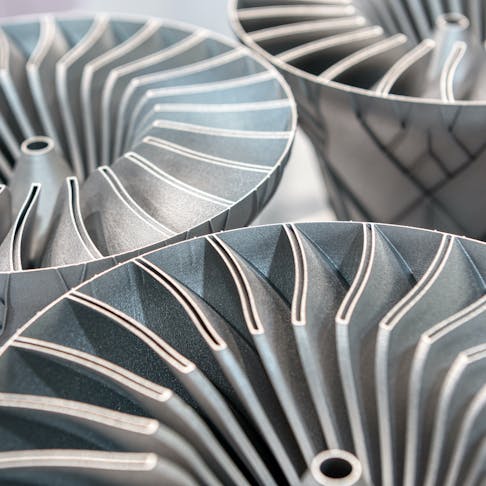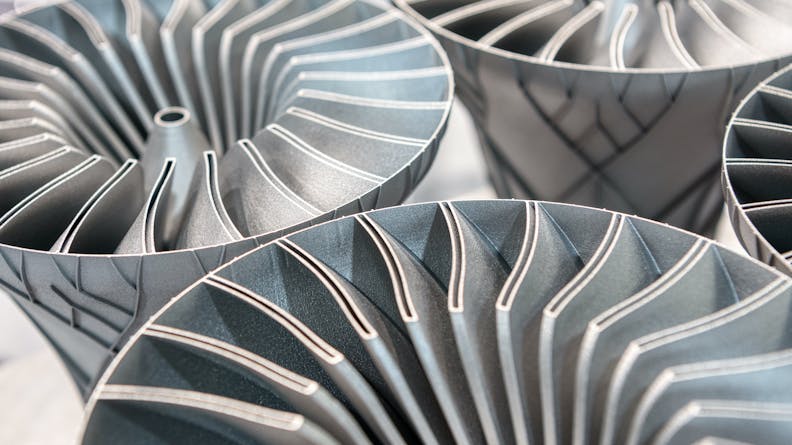
Product Update: New Metal 3D Printing Materials Inconel, Titanium, and Maraging Steel at Xometry
Xometry has added 4 more materials to its lineup of direct metal laser sintering materials.

Xometry has added four new 3D printed metals to its on-demand manufacturing services: maraging steel, Inconel 625, Inconel 718, and titanium. These premium alloys complement the already available stainless steel and aluminum metal 3D printing.
Metal parts in these alloys are produced using direct metal laser sintering (DMLS). This process fuses powdered metal with a high-powered laser to build parts layer by layer. DMLS makes fully dense metal parts with exceptional mechanical properties and less design constraints than traditional manufacturing. Parts can be designed with lattices, generative- or topology-optimized structures, and integrate multiple assembly components into a unified body.
Metal 3D printed parts
| 3D Printed Metal | Description |
|---|---|
3D Printed Metal Aluminum AlSi10Mg | Description A lightweight aluminum alloy that is a great alternative to machining or casting complex geometries. |
3D Printed Metal Stainless Steel 17-4 | Description A fully dense 17-4 PH stainless steel metal with a hardness of 40 HRC. This metal is heat treatable. |
3D Printed Metal Stainless Steel 316/L | Description A fully dense 316L stainless steel metal with superb corrosion resistance. This metal meets the requirements of ASTM F138. |
3D Printed Metal Maraging Steel MS1 | Description A heat-treatable tool steel that can be post-hardened to more than 50 HRC to achieve excellent hardness and strength. |
3D Printed Metal Inconel 625 | Description A heat- and corrosion-resistant nickel alloy offering high oxidation resistance. |
3D Printed Metal Inconel 718 | Description A heat- and corrosion-resistant nickel alloy ideal for high-temperature applications. It offers good tensile, fatigue, creep, and rupture strength at temperatures up to 700 °C (1290 °F). |
3D Printed Metal Titanium Ti64 | Description A lightweight alloy with excellent mechanical properties and corrosion resistance used in high performing engineering applications as well as biomedical devices. |
3D Printed Metal Custom / Other Material | Description Looking for another material? Choose “custom” and let us know by submitting your quote for a manual review. |
3D Printed Metal | Description |
How to Get a Metal 3D Printing Quote for Inconel, Maraging Steel, and Titanium
Step 1: Upload your 3D model to the Xometry Instant Quoting Engine℠
Step 2: Click “Modify Part” and choose DMLS as the process
Step 3: Select your material and add any features or notes
- If you choose Inconel, titanium, or maraging steel: You will be prompted to get a manual quote via digital RFQ. Once you are in the Xometry Digital RFQ Marketplace, your RFQ will automatically populate with your instant quote information. You also have the option to add more details about your requirements before submitting the RFQ. Watch How Our Digital RFQ Service Works.
- If you choose stainless steel and aluminum alloys: You will receive an instant price and lead time.
Want to learn more? Download our DMLS Design Guide and review our capabilities.

